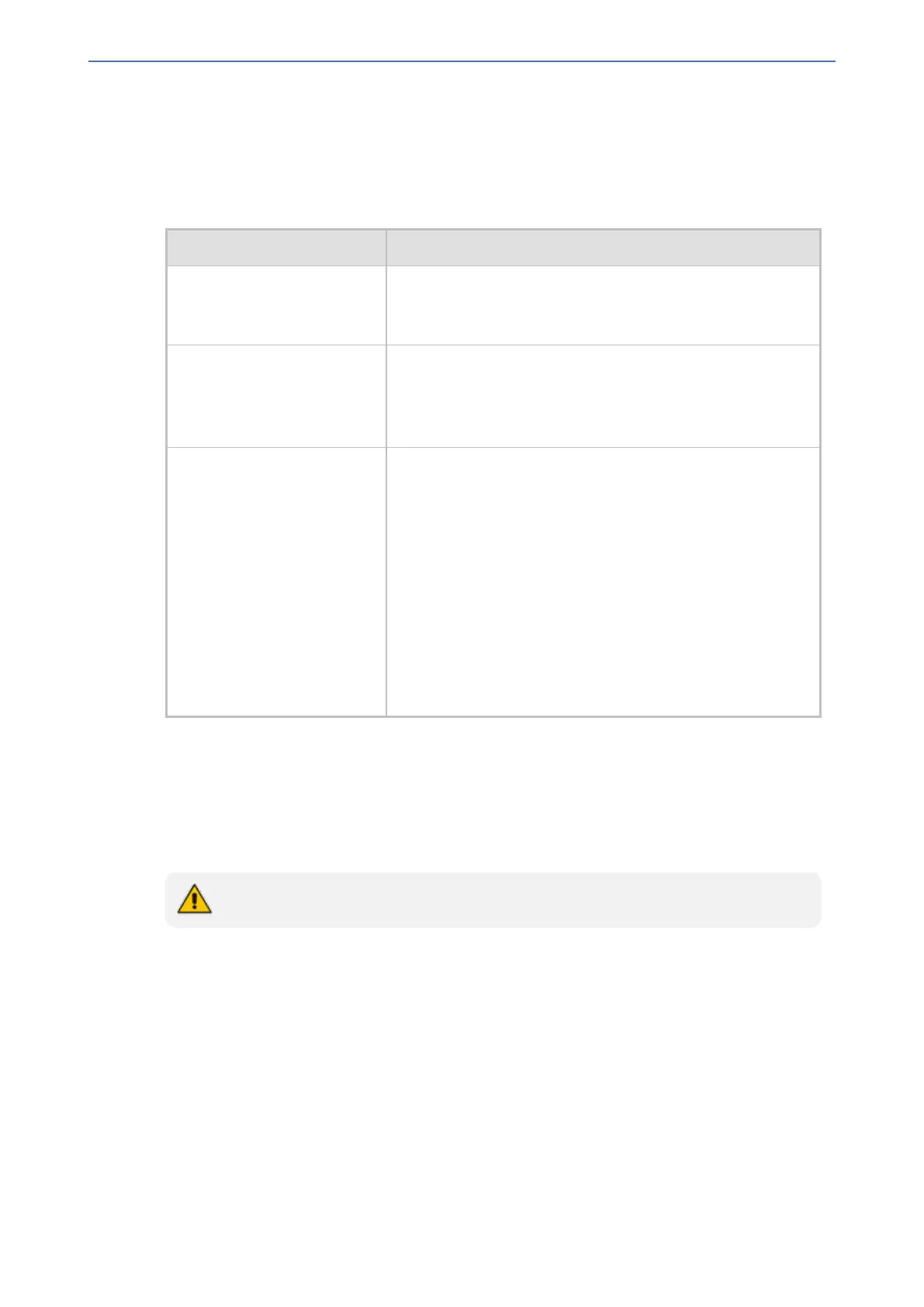CHAPTER25 Routing
Mediant 1000 Gateway & E-SBC | User's Manual
The figure above displays a configuration that forwards IP-to-Tel calls destined for Trunk Group
ID 1 to destination IP address 10.13.5.67 if conditions mentioned earlier exist.
3. Configure a rule according to the parameters described in the table below.
4. Click Apply, and then reset the device with a save-to-flash for your settings to take effect.
Table 25-10:Forward on Busy Trunk Destination Parameter Descriptions
Parameter Description
'Index'
[ForwardOnBusyTrunkDest_
Index]
Defines an index number for the new table row.
Note: Each row must be configured with a unique index.
'Trunk Group ID'
trunk-group-id
[ForwardOnBusyTrunkDest_
TrunkGroupId]
Defines the Trunk Group ID to where the IP call is destined.
'Forward Destination'
forward-dst
[ForwardOnBusyTrunkDest_
ForwardDestination]
Defines the alternative IP destination for the call used if the
Trunk Group is busy or unavailable.
The valid value can be an IP address in dotted-decimal
notation, an FQDN, or a SIP Request-URI user name and
host part (i.e., user@host). The following syntax can also be
used: host:port;transport=xxx (i.e., IP address, port and
transport type).
Note:
■ If you do not specify a port, the device uses UDP port
5060.
■ When configured with a user@host, the original
destination number is replaced by the user part.
Alternative Routing upon ISDN Disconnect
You can configure when the device sends a call to an alternative route if it receives an ISDN Q.931
Disconnect message with a Progress Indicator (PI) IE from the Tel side for IP-to-Tel calls. The
Disconnect message indicates that the call cannot be established due to, for example, a busy state
on the Tel side.
The feature is applicable only to digital interfaces.
You can configure the following modes of operation:
■ Disable: The device does not immediately disconnect the call. Instead, it waits for any
subsequent media from the Tel side (e.g., "this number is currently busy") and forwards it to the
IP side (SIP 183 for early media). Only when it receives a Q.931 Release message, does the
device disconnect the call (sends a SIP BYE message to the IP side). If you have configured
an alternative route, the device sends the IP call to the alternative route.
■ Enable: The device immediately sends the IP call to an alternative route, if you have
configured one. If no alternative route has been configured and the Disconnect message is
received with PI, the device forwards the subsequent early media to the IP side. The device
disconnects the IP call only upon receipt of the subsequent Release message.
- 610 -

